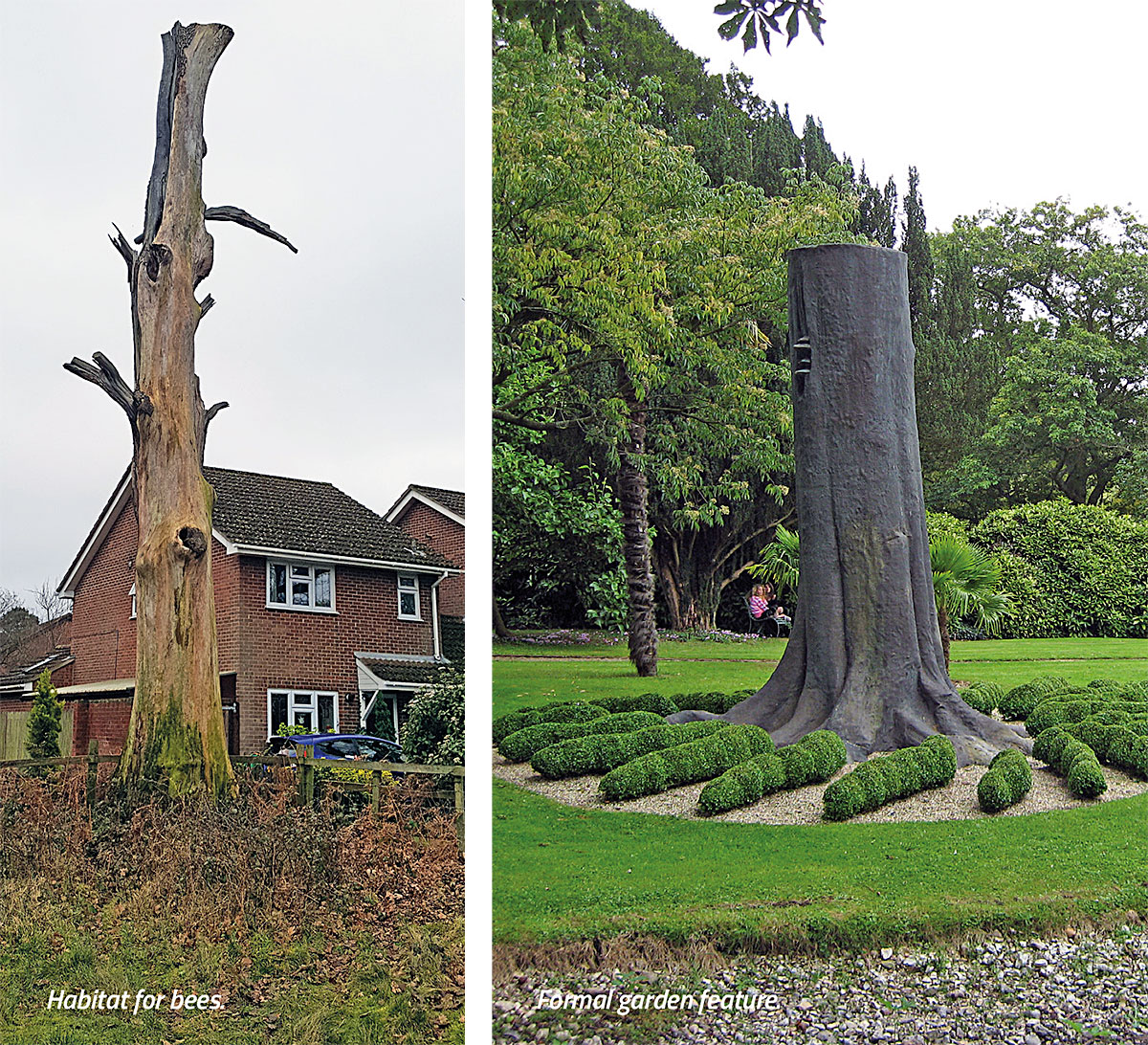Managing trees is an element of my job (which is the best job in the world) and I am often asked to review standing deadwood, monoliths, erect biomass of standing deadwood – call it what you wish, really, but it amounts to the same thing. For the benefit of this article I will refer to the standing tree as a monolith. I appreciate that this is a term used for an upright, man-made stone structure, but for simplicity I shall use it here.
I have carried out research on how we should manage these dead standing trees. I have contacted knowledgeable people in the industry, the Forestry Commission and other such notable government departments dealing with trees. The answers are all relatively simple: keep an eye on them. That is the simplistic view and not one that can carry much weight in litigation ‘Yes, gov, been keeping an eye on that but … well, it just fell over in the night.’
Why keep a monolith anyway?
I have seen first-hand that a monolith can provide a habitat for mammals, small birds, reptiles and invertebrates and food for detritivores in abundance. The height of a monolith can also dictate what will occupy the spaces provided by its demise. The height can be compared with a habitat woodpile, where reptiles and land-based animals will move in. High deadwood can attract flying animals, and so there is a distinct habitat structure to consider.
In relation to a fell, if the location is favourable, and with the tree owner’s consent, I will always prescribe a monolith as a wildlife habitat. It is an opportunity for me to promote the environmental benefits, along with encouraging the public to take responsibility for enhancing their surroundings in ecological terms.
When choosing a height to reduce the tree to in order to create a monolith, I consider primary limb attachment and length (should they be reduced towards the stem to balance the monolith?), diameter of the stem, root flare and most importantly the target. Generally, I reduce the stem height to between 4m and 8m above ground level in the first instance. I must take into account how further work will be carried out if the monolith needs it, if it is isolated and a climber or mobile elevated working platform (MEWP) is required, for example.
Inspecting a monolith
So, should we keep a record of inspections or merely walk past the monolith in the hope that it will either stand there forever or someone will fell it and the problem will be removed? It has always been my stance that the monolith should be included within a Visual Tree Assessment or Target Inspection Report.

The target will definitely prescribe the frequency of inspection, but there are ways in which the knowledgeable tree inspector can make further assessments of the longevity of the monolith. A 3mm diameter drill-bit, 30cm long is in my ‘tool kit’. Scraping away the upper soil level around the tree will often locate its structural roots, including the buttress and root flare. It must be remembered that the root crown consists of stronger wood, often twisted with grain, and so will rot slower than that of other roots. Confirming root connection to the root crown will determine if the tree is going to stand upright (or not). Consider the Victorian stumpery – the tree and lateral roots had long since rotted! By using the drill (much like a resistograph) I can feel resistance or otherwise. If the roots provide me with sufficient evidence that they are intact I then consider soil structure. From sand to clay, the tree will react differently to wind-loading, topography and hydrology. Therefore, I must consider these factors before making my final decision to retain or remove.
In addition to drilling, a further investigation of sound wood is carried out using a trusty 30-ounce Thor 408 Hammer. The hammer sounding can tell you quite a lot about the tree and it enables the user to form a picture of what is happening inside it, the size of a cavity or where the flaw may lie.
I have not found any hard and fast rules about monolith retention and possibly this could be included in the forthcoming amendment of the National Tree Safety Group guidelines of 2011.
The images in this article show some of the trees I have inspected or continue to monitor as part of my ongoing tree assessment regime.
Marco Bartolini joined the army at 17 and resigned 31 years later after a career that culminated in being presented with the Meritorious Service Medal. School friends joked that he was going to count trees on Dartmoor: `Many decades later I am now not only counting but surveying, inspecting, advising, giving talks about and researching trees. I have been practising environmental work since 2006 and as a consultant since 2011. I am also an avid ecologist with a number of NE licences.’
Article taken from Issue 182 of the ARB Magazine.